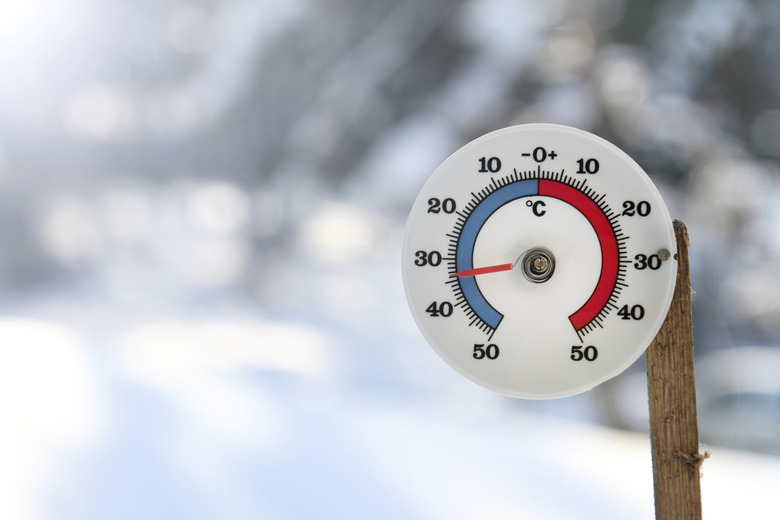Proper Location For An Outdoor Thermometer
The proliferation of digital weather stations, weather apps and online networking of weather watchers may have piqued your interest in recording outdoor temperatures yourself. To ensure you get accurate readings, it's important to place your thermometer in the optimal location. These tips are appropriate for digital sensors as well as traditional analog thermometers.
Height of the Thermometer
Height of the Thermometer
Placement of a thermometer or digital temperature sensor is the key to accuracy. The sensor should be placed 1.2 to 1.8 meters (4 to 6 feet) off the ground. This will prevent ambient ground temperature from affecting the reading.
Distance From Your House
Distance From Your House
The sensor should be in a shady location that remains protected from precipitation, but it should not be too close to a building because the inside temperature may affect readings. Thermometers placed near a building's window will especially give a less accurate outdoor measurement. NWS standards say the sensor should be placed a distance four times the height of the nearest building. So if your roof is 6 meters (20 feet) high, the sensor should be placed 24 meters (80 feet) from your house.
Protect the Thermometer from Sun
Direct sunlight will give a higher reading. The sensor should be located where neither direct nor indirect solar radiation will shine on it, if possible. If it is directly in the sunlight part of the day, readings during those times will be higher. Building a small enclosure with ample ventilation and at the proper height and distance from your house may be the best way to get accurate readings.
Ensure Good Airflow
Ensure Good Airflow
Airflow is important for good readings. Therefore, the sensor should be placed in a flat area where air moves freely and not in an area sheltered from airflow or at the base of an incline. An exception to the incline rule would be if local terrain is consistently not level.
Distance From Pavement
Distance From Pavement
Both asphalt and concrete have a tendency to store and emit heat, so the sensor should be at least 30 meters (100 feet) away from paved roadways and sidewalks. Locations above dirt or grass are ideal.
If Conditions Are Not Ideal
If Conditions Are Not Ideal
Your living situation may not always allow for an ideal sensor placement. If this is the case, you can still obtain results from your thermometer, bearing in mind you are measuring only the air temperature near your building and not the true air temperature in your wider area.
Cite This Article
MLA
Rice, John. "Proper Location For An Outdoor Thermometer" sciencing.com, https://www.sciencing.com/proper-location-outdoor-thermometer-5571432/. 27 April 2018.
APA
Rice, John. (2018, April 27). Proper Location For An Outdoor Thermometer. sciencing.com. Retrieved from https://www.sciencing.com/proper-location-outdoor-thermometer-5571432/
Chicago
Rice, John. Proper Location For An Outdoor Thermometer last modified March 24, 2022. https://www.sciencing.com/proper-location-outdoor-thermometer-5571432/
